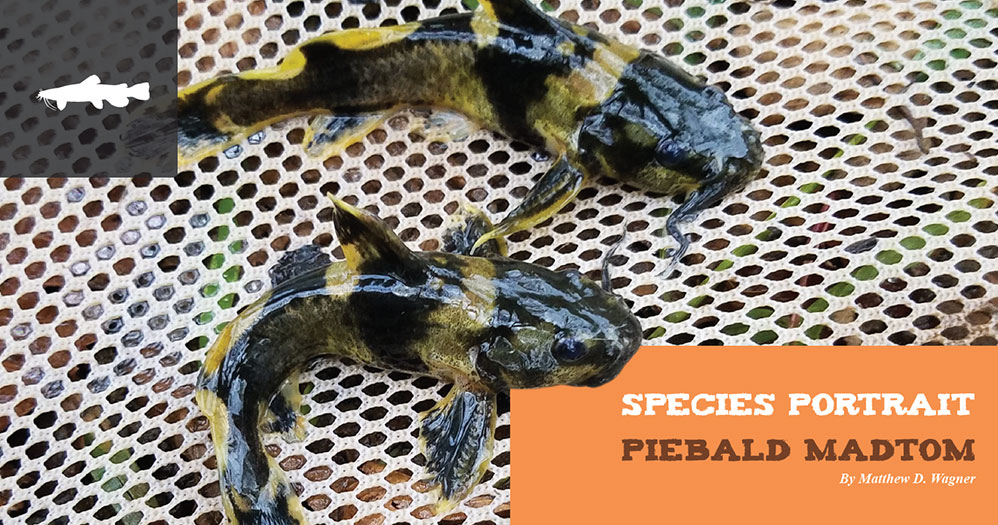Species Profile: Piebald Madtom
9/13/2017 9:28:44 AM
By Matthew D. Wagner

Scientific name: Noturus gladiator
Pronunciation: no-two-russ glah-dee-ate-or
Family: Ictaluridae
It is debatable what the rarest fish species in Mississippi is, but the Piebald Madtom, a small, elusive catfish, is definitely a contender. Few people have ever heard of the Piebald Mad-tom and only a select few biologists have ever seen one. Why? This species of fish is extremely hard to extricate from the leaf-packed, woody debris it inhabits in small rivers. Degradation of habitat and water quality in streams throughout the range of this fish also contributed to population declines.
The Piebald Madtom is part of the North American catfish family. They only grow to about 6.5 inches in length and are one of 11 species of madtoms (small venomous catfish) found in Mississippi. This species has a distinct contrasting black-and-yellowish-tan pattern, with distinct tan circles behind the eyes and in front of the dorsal fin. The body is typically peppered with black spots and has dark black on the head, center of the back, and the tail. The species also has a distinct recurved and intricately serrated spine in its pectoral fins.
Piebald Madtom have venom glands associated with their serrated spines that function as a defense mechanism, but their venom will only “sting” if you get cut by either the serrations or the tips of the spines on their pectoral and dorsal fins. The venom feels like a strong bee sting, but the pain typically fades away after a few minutes and doesn’t cause much swelling.
This species is state-endangered in Mississippi, deemed “in need of management” in Tennessee, and is currently petitioned for listing under the Federal Endangered Species Act. Since 1964, Piebald Madtom have been documented only 29 times throughout Mississippi, making it one of the seemingly rarest fishes in the state. The species is found in direct tributaries to the Mississippi River in Mississippi and Tennessee. In Mississippi, this includes the Coldwater, Little Tallahatchie, Hatchie, Wolf, and Big Black river drainages; however, it is considered extirpated from the Little Tallahatchie.
As when the term is commonly applied to horses, “piebald” refers to highly contrasting patterns of dark and light pigment, which occur on the body and fins of this fish. The word Mad-tom is thought to be referring to one’s anger after getting poked by one of their sharp venomous spines.
Piebald Madtom are known to eat dragonfly larvae, aquatic fly larvae, and crayfish. In rare instances, they have even eaten spiders and caterpillars that have fallen into the water.
Biologists from the Mississippi Department of Wildlife, Fisheries, and Parks (MDWFP) are currently surveying for the species throughout its range in Mississippi to document if the species still is persisting. This data will aid managers who are charged with determining the appropriate management actions for conservation of this species.
Matthew D. Wagner is a Conservation Resources Biologist and Curator of the Ichthyology Collection at the Mississippi Museum of Natural Science.









